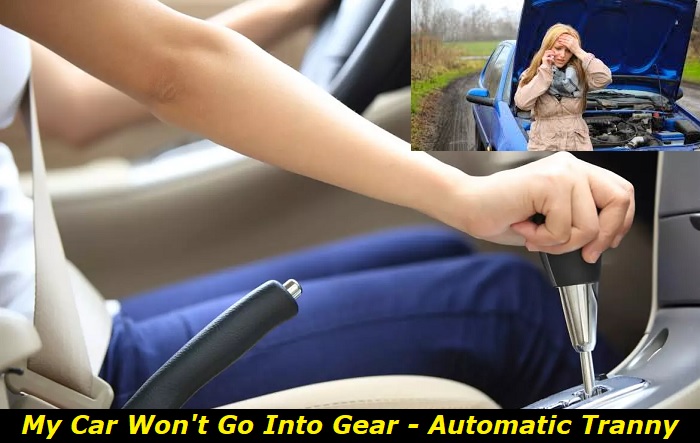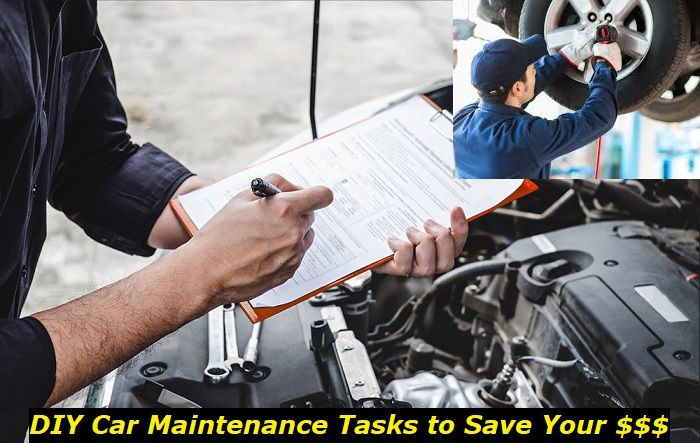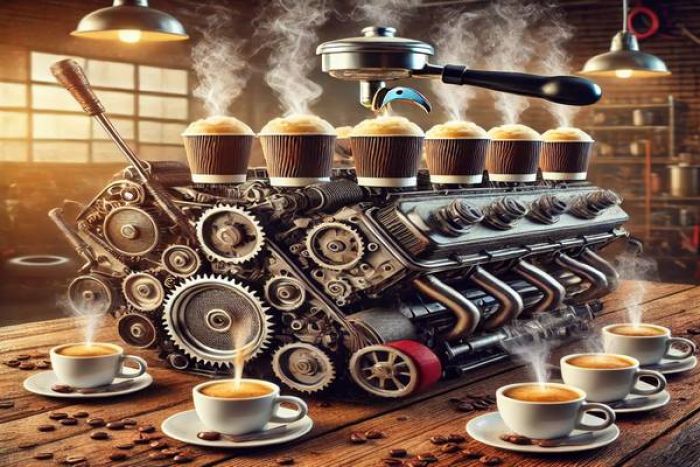Transmission problems are among the most feared issues that drivers can face. The transmission is a complicated system that's difficult to diagnose and repair on your own. Also, transmission problems are often rather expensive to deal with. One common transmission issue is finding that your automatic transmission won't go into gear. What are the reasons for this?
Transmission no-shift problem highlights
- Level of importance:High
- Reasons:Control module failure, low fluid,badfluid, mechanical issues
- Needed expertise:High
- Needed tools:Professional tools set
- Time taken:5-10 hours
- Can you drive? Yes, if some gears engage
- Possible issues: Fatal transmission damage, car stationary.

Reasons Why Your Car Won't Go into Gear
There are many different reasons why your car has trouble going into gear or staying in gear. Here are some of the common causes of this problem.
1) Low Transmission Fluid
This is one of the most common causes of shifting problems in both manual and automatic transmissions. Transmission fluid acts to lubricate and protect the moving parts of the transmission system. It provides the hydraulic pressure required for certain parts to work.
If the level of transmission fluid is lower than the required level, the transmission will not work as effectively as it should. The friction in the transmission system will be too high, leading to premature wear on the transmission parts, as well as jerky movement. The hydraulic pressure required to move certain parts will also be too low, causing them to work sluggishly or not at all.
If you often top-up your transmission fluid and still find that it leaks often, then you might have a leak in your transmission system.
2) Bad Transmission Fluid
We just finished discussing low transmission fluid, but this is different. Not all transmission fluid is good transmission fluid, especially if it's dirty or has been in your car for too long. As your transmission operates, bits of metal are worn from the surfaces into your transmission fluid. These bits of metal, as well as dirt from contaminated transmission fluid, will affect how the transmission works.
Dirt and contaminants in the transmission fluid cause the system to wear down at a faster rate and prevent it from building up the required hydraulic pressure. This can result in difficulty shifting into gear.
3) Torn Linkage Wire
The shifter linkage cable communicates the change in gears to the transmission. Without the shifter linkage, the transmission won't be able to shift gears at all. In some cases, the linkage cable can wear down and break due to friction and rubbing against other metal parts of the car.
This problem is more common in certain vehicles, so make sure to check whether your vehicle is susceptible to this problem.
4) Bad Torque Converter
The torque converter is the automatic transmission's equivalent of a clutch. It contains many different components such as a pump, stator, and turbine. All of these parts could eventually break down or fail, resulting in difficulty shifting or even making shifting impossible.
5) Damaged Shift Interlock Solenoid
Most automatic vehicles come with a shift lock that prevents you from shifting out of Park by accident. The shift lock turns off when the brake is depressed, allowing you to switch out of Park only when the brake is down. This shift lock system requires the shift interlock solenoid to work.
If the shift interlock solenoid is damaged or faulty, the car won't be able to disengage the shift lock. This prevents the car from shifting out of Park and going into gear.
6) Bad Transmission Valve Body
The transmission valve body is one of the most important parts of the transmission system. It houses valves and solenoids that direct the flow of transmission fluid to shift the gears as needed.
One of the main symptoms of a failing valve body is difficulty shifting and staying in gear. You will also notice delayed shifting. As the problem gets worse, and the valve body takes more damage, the transmission will eventually stop shifting or going into gear.
What to Do When Your Car Won't Go Into Gear
It's a very frustrating problem when your car won't go into gear. If you can't get your car out of Park, you won't be able to get it moving, making the vehicle pretty much useless. To get your car on the road again, you'll need to figure out the cause of the problem and get it fixed.
The transmission in your car is a very complicated system. It's difficult to repair, even if you have some repair experience. You can have a professional mechanic take a look at your car to diagnose and repair the source of the problem.
Depending on the cause of the problem, the gear shift issue might be solved through one of the following methods.
- Check For Transmission Fluid Leaks
If your transmission fluid level is low, you'll want to top up the fluid in the system. However, before adding transmission fluid, you'll need to confirm that your transmission system isn't leaking.
You can inspect the system for leaks by looking at the transmission components and inspecting the seals, gaskets, and housings for pink transmission fluid. You can wipe down parts of the system with a clean hand or piece of tissue paper to help you locate transmission fluid more easily.
If there are any leaks in the transmission system, you will need to have the damaged part replaced before topping up your fluid.
- Top-Up Transmission Fluid
If your transmission fluid level is low, it will need to be topped up. This is a simple procedure, and one of the first things you should try.
Before topping up your transmission fluid, check the level with the dipstick. If it is below the minimum level, you will need to top it up.
Make sure to keep an eye on the quality of the transmission fluid. If the transmission fluid is dirty, you will need to flush it before adding new fluid.
- Flush Transmission Fluid
Before topping up your transmission fluid or taking your car to a mechanic, you should make sure that the car still has clean fluid. You can do this by removing the dipstick and wiping it on a clean white piece of paper or tissue. Clean transmission fluid will appear pink or bright red. Dirty transmission fluid can appear dark brown or black.
- Repair Torque Converter
If any of the components of the torque converter has failed, you will need to replace the entire unit. This can be done by a mechanic who will confirm whether the torque converter needs to be replaced, and will carry out the replacement process for you.
- Replace Shift Interlock Solenoid
A bad shift lock solenoid will need to be replaced. You can get a replacement solenoid online and install it yourself. Make sure to choose a solenoid that is a match for the one in your car.
Depending on your car, you might be able to access and remove the shift solenoid without removing the valve body.
In other cars, the valve body will need to be removed to access the shift solenoid. In cars like this, it is recommended that you have a mechanic change the shift solenoid for you, as it is easy for things to go wrong when handling the valve body.
- Repair Shift Linkage Cable
A broken shift linkage cable will need to be replaced. Normally, you can go to a mechanic to have the shift linkage replaced. This is a good way to have the problem repaired quickly and easily. However, it is more expensive than replacing it yourself.
If you choose to make to repair the shift linkage yourself, you can make use of a shift linkage replacement kit. These kits come with the tools you need to make the replacement easily and at a low cost.
- Replace or Rebuild the Valve Body
The valve body is very complicated, and you shouldn't try to replace it yourself. If you suspect that the problem is a faulty valve body, you should take your car to a professional mechanic to fix it.
Depending on the extent of the damage to the valve body, you might need to have it either rebuilt or repaired.
Conclusion
When your car is stuck in gear, it keeps you from getting where you need to go and using your car normally. The issue is usually caused by a low level of transmission fluid and simply requires the level to be topped up. It can also be caused by dirty transmission fluid, requiring your fluid to be flushed.
Mechanical problems with the transmission will also result in your car not being able to go into gear. Some of these problems are a broke shift linkage, a faulty valve body, a damaged torque converter, or shift interlock solenoid. These issues can be fixed by taking the car to a certified mechanic to handle.
About the authors
The CarAraC research team is composed of seasoned auto mechanics and automotive industry professionals, including individuals with advanced degrees and certifications in their field. Our team members boast prestigious credentials, reflecting their extensive knowledge and skills. These qualifications include: IMI: Institute of the Motor Industry, ASE-Certified Master Automobile Technicians; Coventry University, Graduate of MA in Automotive Journalism; Politecnico di Torino, Italy, MS Automotive Engineering; Ss. Cyril and Methodius University in Skopje, Mechanical University in Skopje; TOC Automotive College; DHA Suffa University, Department of Mechanical Engineering






Add comment